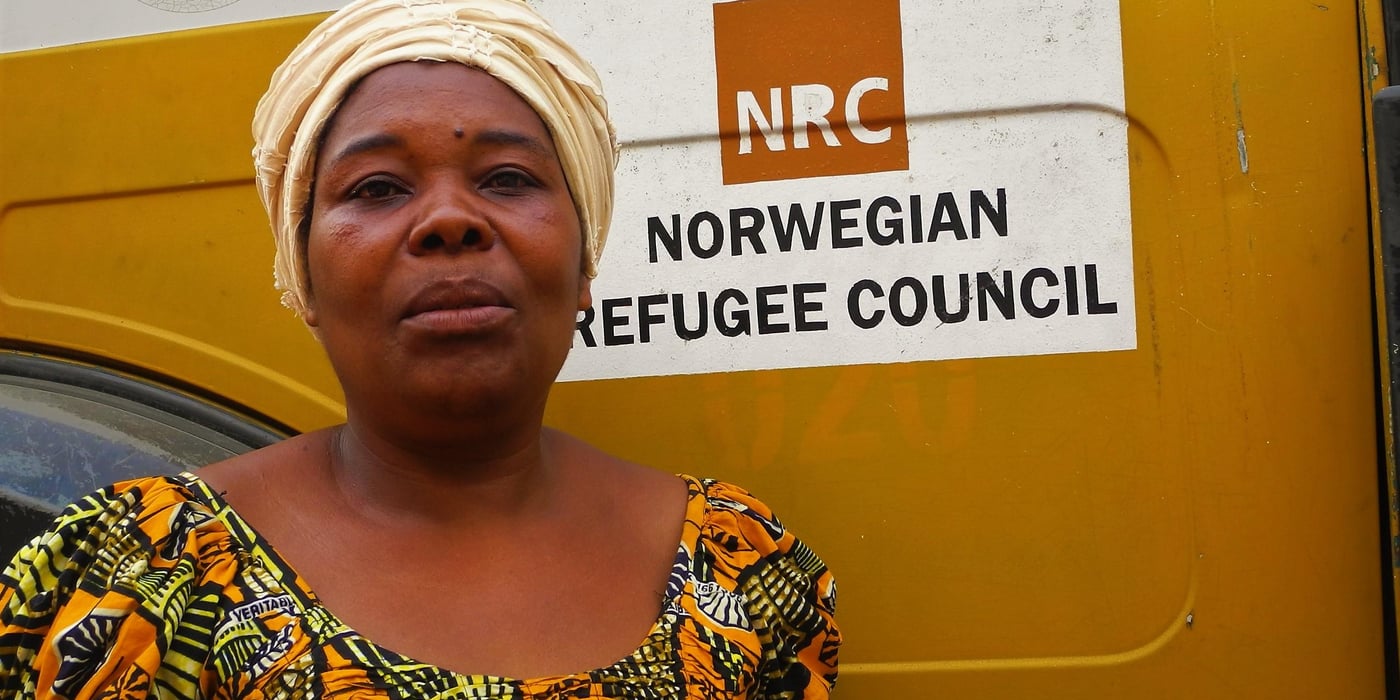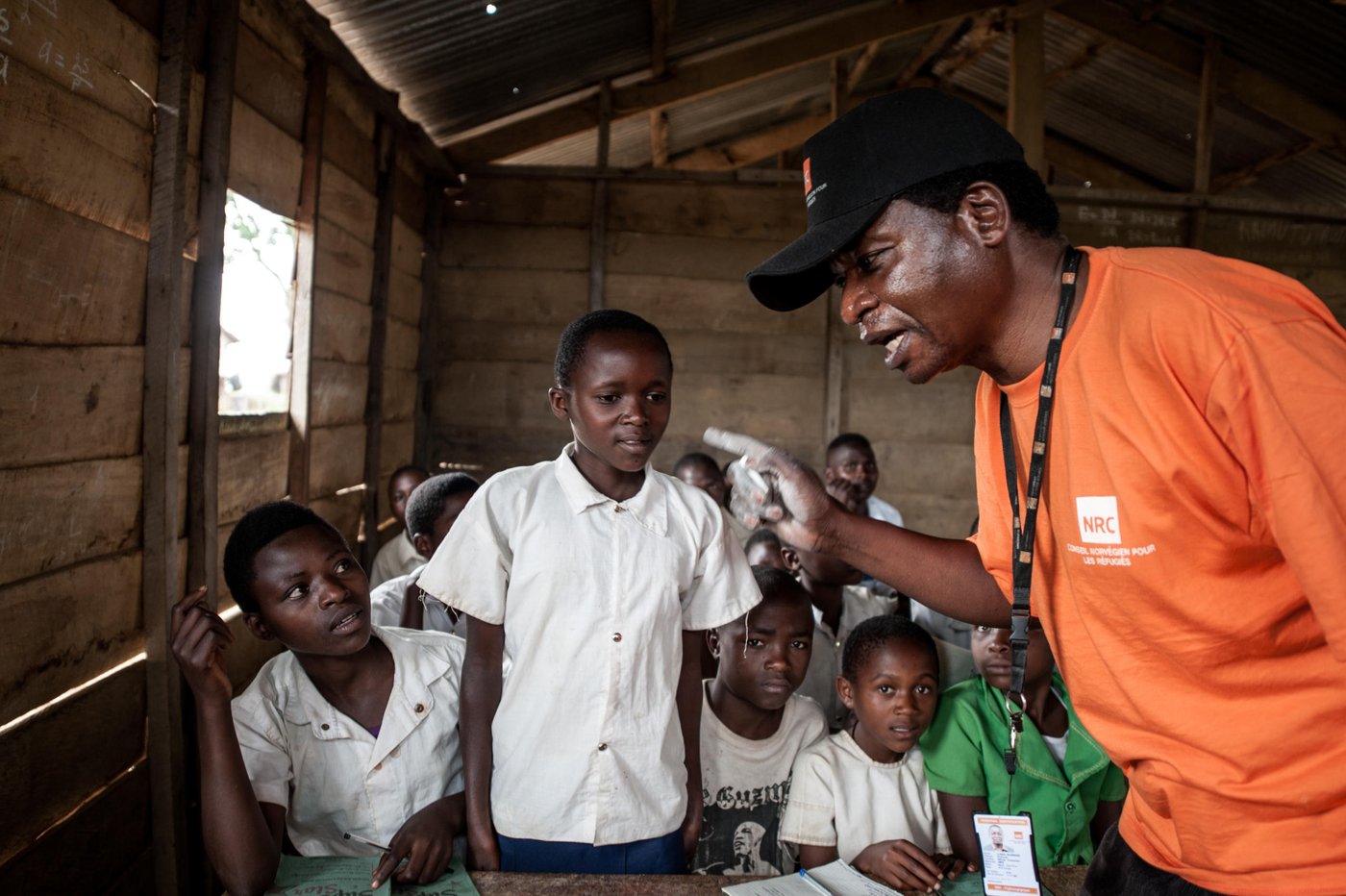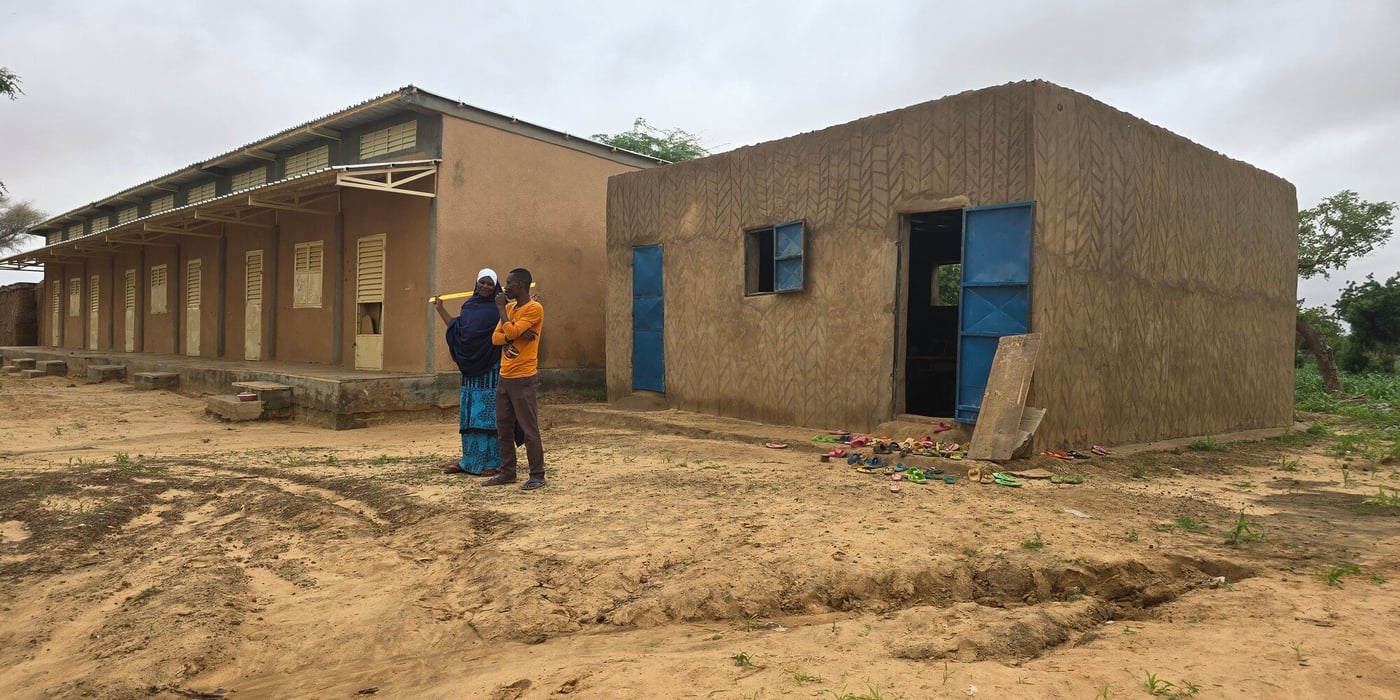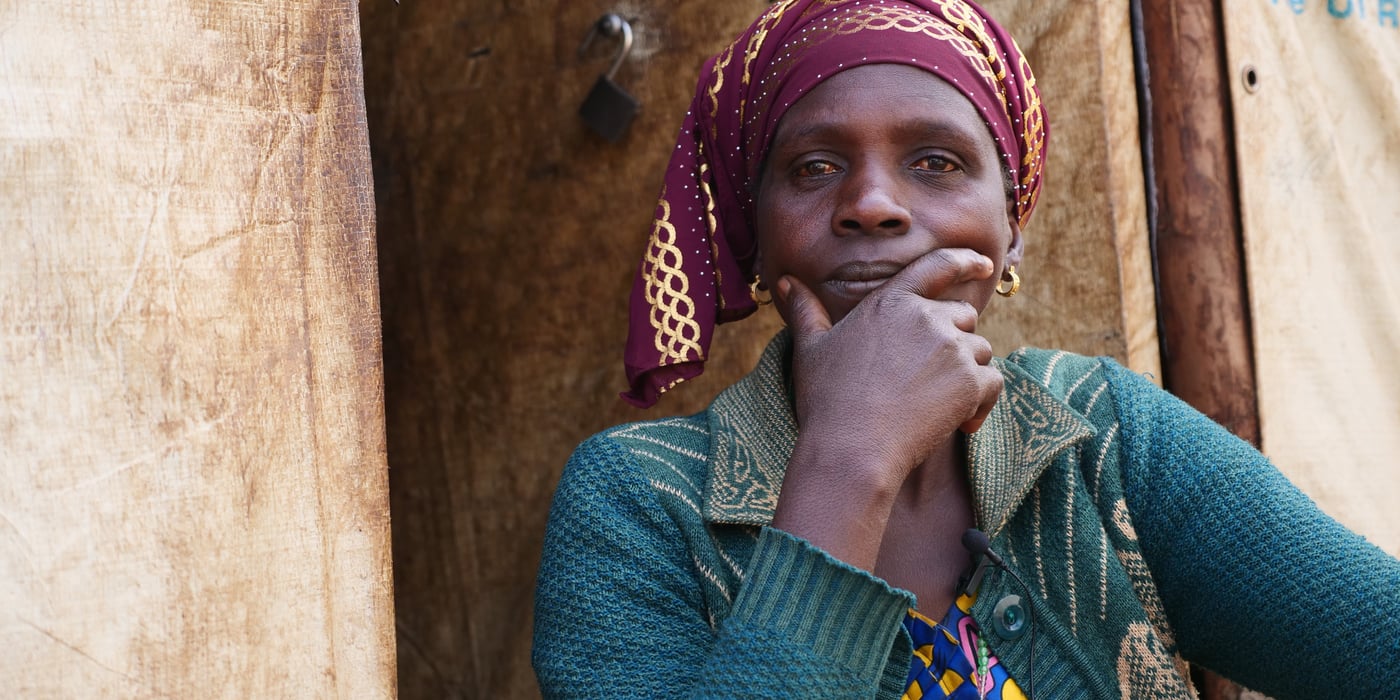
In the town that used to be home to around 1.9 million people, clashes between armed groups have left 1.3 million people displaced and ten thousands of children without education in the Kasaï region.
But Béatrice, 55, remembers Kananga as a pocket of stability in a country that had seen conflict for many decades.
“In the summers when I was off from school, I would travel with my parents to Kananga to visit my grandparents and cousins. I would look forward to these times,” she says.
Today, she works for the Norwegian Refugee Council (NRC) in Kananga, determined to bring life-saving aid to people affected by the escalating conflict. Her team was one of the first on the ground in the town where she spent her childhood summers.
“Things have changed so much,” says Béatrice about Kananga, which means a ‘place for peace or love’ in local language Tshiluba.
Some of my own family members are so frightened to return to their homes that they are desperately trying find shelter near Angola.Béatrice, 55, liaison officer for NRC in DR Congo
A collapsing economy
Over the years when Béatrice grew up, the Kasaïs, a region in central DR Congo, saw its economy deteriorate. The once modern railroad network became dilapidated and the import of food and goods became increasingly difficult. Prices of food began to skyrocket and malnutrition increased. Meanwhile, lifelong residents of Kananga, the capital of Kasaï-Central, left to find better jobs in bigger cities.
According to the World Bank, the Kasaï region has one of the lowest development indices in DR Congo. Before the conflict, seven out of ten people lived in poverty.
When the conflict broke in mid-August 2016, the already desperate population came to its breaking point. Intense, violent fighting caused people to flee the villages and towns in Kasaïs` five provinces, going as far as the Angolan border.
“Some of my own family members are so frightened to return to their homes that they are desperately trying find shelter near Angola,” explains Béatrice. Eight out of 26 provinces in DR Congo are now affected by displacement due to ongoing armed clashes between various actors in the Kasaï provinces.

Béatrice gives back
While watching the devastating effect the crisis in Kasaï was having on her own people, Béatrice, who has years of experience working with NRC helping refugees and displaced people, knew that she had to do something.
In June, she was hired as a liaison officer for NRC DR Congo’s new mission in Kananga.
“Many, many children were out of school,” she says as she shakes her head. “I spoke with parents who were too frightened to send their children to school for fear that they might be kidnapped by armed groups.”
Béatrice along with the rest of the NRC team that went to the towns of Kananga and Nganza to assess the area, also noted that shops were low on supplies and the stocks that remained were old and rotting.
“The female merchants would run up to me and ask me to help them open up or look for points of access so that goods can pass through,” she recounts. “The desperation in those women’s faces haunts me to this day.”
We know that malnutrition will definitely rise.Béatrice Lusamba, 55, NRC's liaison officer in DR Congo
Fear of rising malnutrition
As hunger is spreading across the region, churches and civil society groups are preparing massive amounts of porridge to feed displaced men, women and children stuck in Kananga with no livelihood or means to feed themselves. But with low funding and increasing needs, these civil society groups have difficulties meeting the demands.
“We were also told that some of the small-scale farmers had lost at least two seasons of harvest, so food is becoming increasingly scarce,” she continues. “We know that malnutrition will definitely rise.”
Insecurity also hampers aid efforts. Armed groups are harassing civilians transporting life-saving goods and food to people in need.
“I would feel great joy if my people were to gain the ability to exist in dignity—without the threat of violence once again.”
NRC in Kasaï
Our Kasaï-Central mission aims to offer life-saving and life-sustaining assistance through activities such as education, food and distribution of household items
Our community approach includes members of the community. We listen to their feedback, advice and counsel when implementing activities. This way, we ensure sustainability well beyond the emergency response period.
“It is essential for humanitarians to develop their programming in consultation with the communities they serve—especially in communities that are unfamiliar to humanitarian actors,” explains Ulrika Blom, NRC´s country director in DR Congo. “Kasaï-Central is a case in point. It challenges us to develop innovative programming and also use the experiences of the local community.”

- The rapid and escalating displacement of Congolese citizens will likely be the greatest humanitarian concern in the coming six months.
- The Kasaï region has experienced violent armed clashes since August 2016, when tribal leader Kamuina Nsapu was killed. Since then, the violent conflict has caused the displacement of 1.3 million people in Kasai’s five provinces; Kasaï-Central, Kasaï, Kasaï-Occidental, Sankuru and Lomami.
- A total of 3.7 million people are displaced in DR Congo. Over a third of people displaced in DRC are located in the Kasaï provinces.
- With fighting getting worse, many displaced people have been migrating further out — across the Congolese border into Angola.
- Lacking money for school fees, many students are currently out of school in Kananga, and are therefore at greater risk of being recruited by armed groups in the area.
- NRC is one of the first international humanitarian organizations to respond to the crisis in Kasaï Central province, deploying a team to the capital, Kananga. Kasaï Central is the epicentre of the crisis, hosting about 630,000 displaced people.



